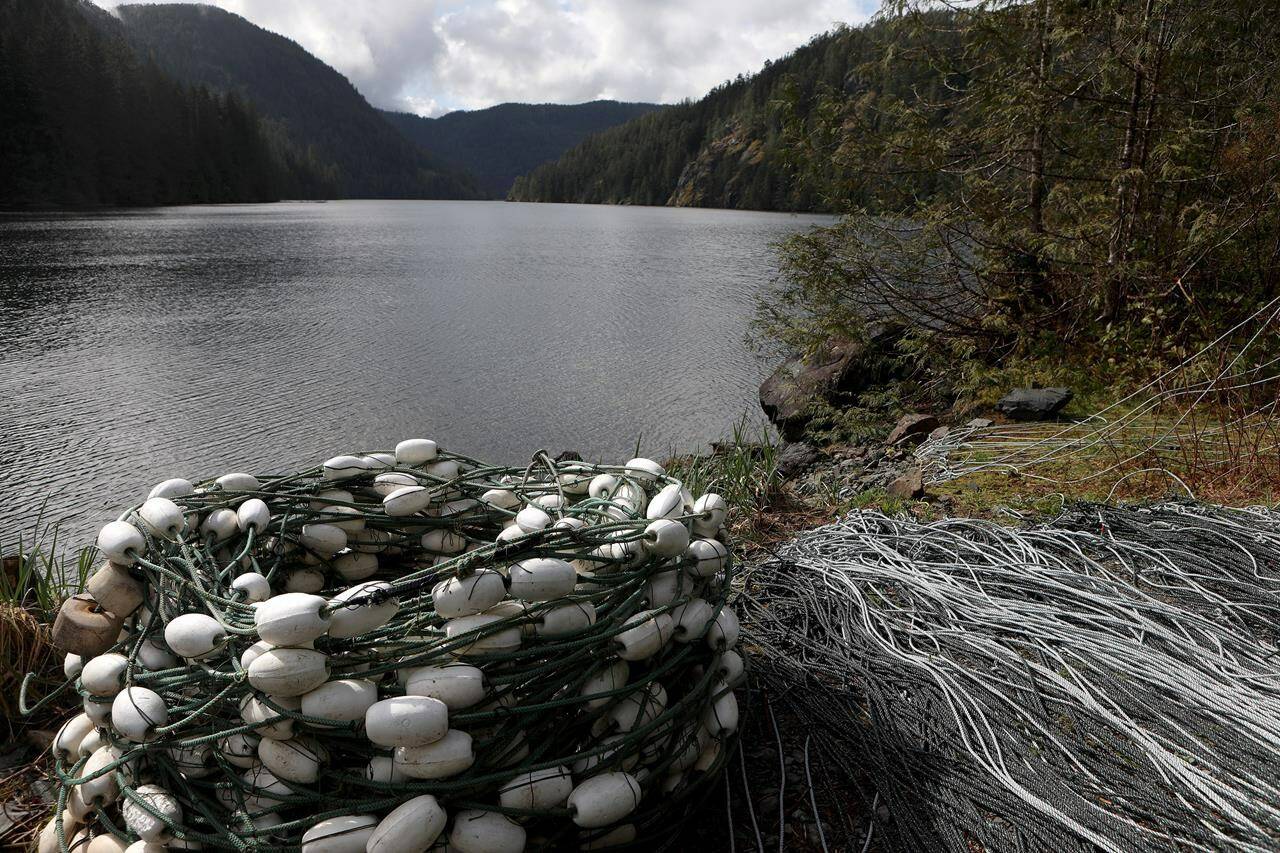Plans are settling into place for an attempt to rescue a young killer whale calf stranded in a tidal lagoon near the Vancouver Island village of Zeballos within four or five days, says the area’s First Nation chief.
Ehattesaht Chief Simon John has previously said the plan to remove the female orca calf from the lagoon could happen this week, but he said Wednesday it may be as early as Sunday or next week.
He said the rescue attempt date now is being connected to the health of the young orca and to advice from marine mammal experts, including those from the Vancouver Aquarium.
“That type of clarity is related to the professionals involved with it,” John said. “But I’m hoping that within the next four or five days. I don’t know how much further beyond we can look into.”
The First Nation said it is relying on its traditional knowledge about whales and its territorial waters, along with modern tools and advice from whale experts, to determine how best to rescue the orca calf.
The two-year-old female has been alone in the remote tidal lagoon for more than two weeks after the death of her pregnant mother.
First Nation members, federal Fisheries Department marine mammal experts, whale scientists and boat and machine operators have spent much of this week in meetings preparing for a rescue attempt.
Equipment has been arriving daily in the community of about 200 people, located more than 450 kilometres northwest of Victoria.
A large grader was observed plowing the area’s gravel roads near where the rescue attempt is expected to occur, while other people were testing the large nets that will be used to corral to young orca at a shallow end of the lagoon.
Federal Fisheries Department officials and Ehattesaht leaders have said the attempt will involve getting the orca calf to move to shallow water where the rescue team will attempt to place it in a sling and lift it into a specially outfitted transport vehicle.
The vehicle will then take the young whale to the ocean where it will be placed in a net pen, similar to those used at B.C. fish farms, in the hope it can be released and reunited with its extended family.
“I’m really hopeful for that,” said John. “If we were to achieve it, the people who are capable of achieving it are in the area now.”
He said he personally watched the calf in the lagoon and it appears healthy.
“There wasn’t a lot of concern about it,” said John. “I’m certainly thinking it must be super hungry by now.”
The Fisheries Department said in a statement that rescue plans, approaches, and options are being discussed and reviewed, but the exact timing of an attempt to get the orca calf out of the lagoon to a possible open ocean reunion with its extended family members has not been set.
The First Nation named the young orca kwiisahi?is, or Brave Little Hunter, after she ventured into a tidal lagoon off northwest Vancouver Island with her mother last month, but tragedy resulted when the pregnant mother killer whale became stranded on a rocky beach at low tide and died.

